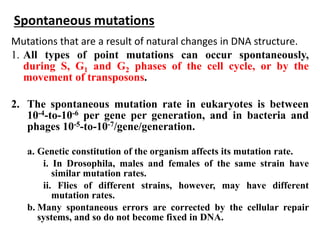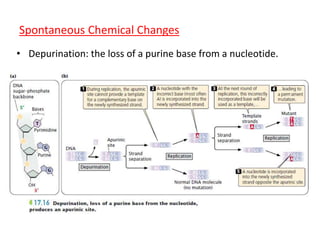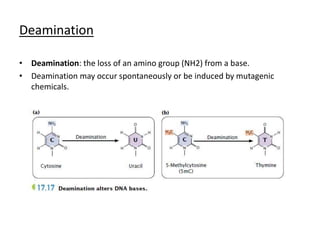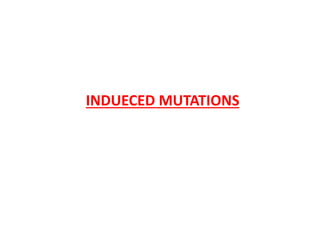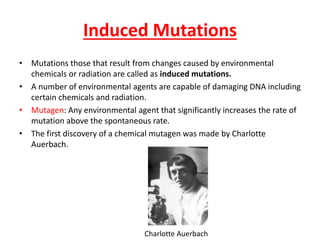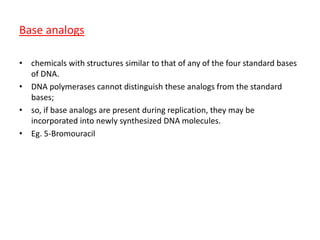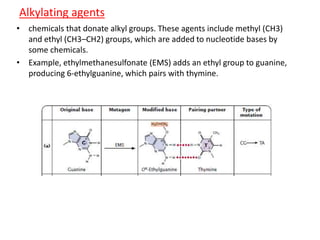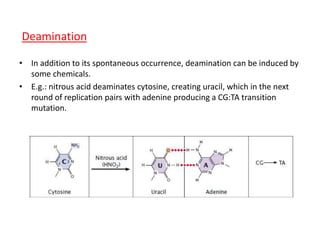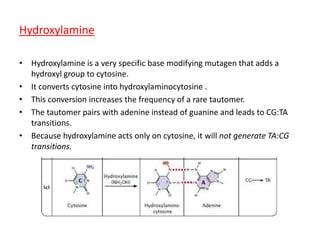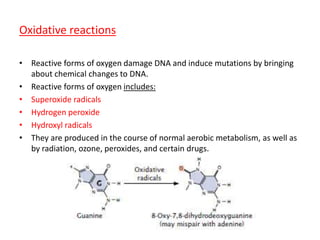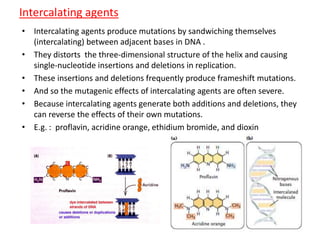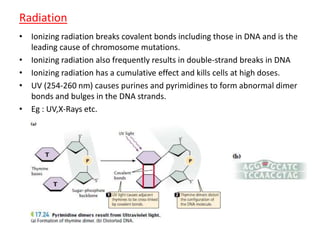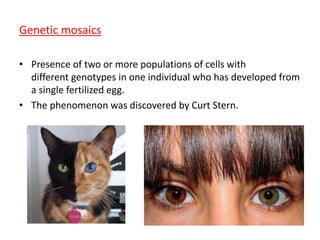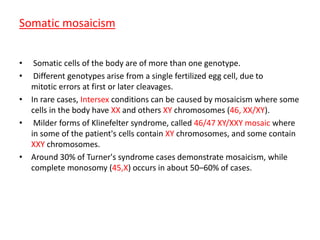Mutations are heritable changes in DNA that occur spontaneously due to errors in DNA replication or are induced by environmental mutagens like chemicals or radiation. Spontaneous mutations arise from replication errors or chemical changes to bases, while induced mutations are caused by agents that damage DNA like base analogs, alkylating agents, or radiation. Genetic mosaics occur when two or more cell populations with different genotypes arise from a single fertilized egg due to mitotic errors, causing somatic or gonadal mosaicism.


